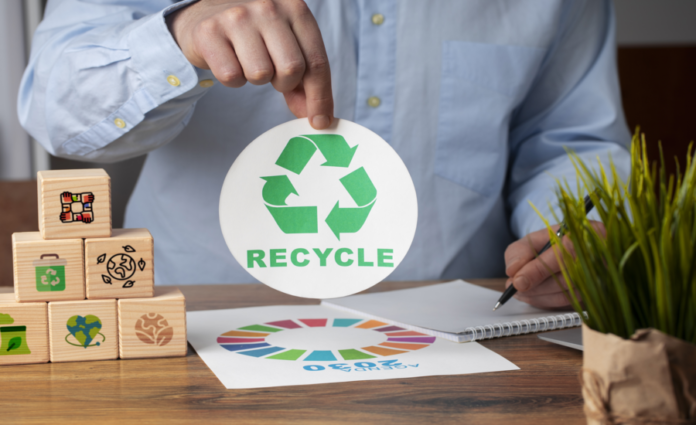Circular Economy is more than a sustainability trend. It is a cultural shift that connects the wisdom of the past with the innovation of the present. Our grandparents often lived with practices of reuse, repair, and resourcefulness. Today, we revisit those habits but enhance them with modern technology, advanced design, and global cooperation. This blending of nostalgia and modern living has the power to transform how we make, use, and value products in everyday life.
What is the Circular Economy?
The Circular Economy is a way of designing and managing systems so that products and materials last longer, waste is reduced, and resources are reused. Unlike the linear model of take, make, and dispose, the circular approach focuses on keeping materials in continuous use. A broken appliance is not thrown away but repaired, a used garment is not discarded but resold or upcycled, and packaging is designed to be recycled back into new products.
The Return of Old Habits
In earlier times, people repaired torn clothes, passed down furniture, and found multiple uses for everyday objects. These habits were rooted in necessity, but they also created a culture of care and creativity. The circular economy brings back those values, reminding us that durability and resourcefulness are not outdated ideas but timeless practices. Repair cafés, second-hand stores, and community workshops reflect this revival of traditions in a modern context.
Modern Living and Technology
While nostalgia brings back the mindset of repair and reuse, modern living provides the tools to make circular practices scalable and efficient. Artificial intelligence now helps in sorting waste, blockchain tracks supply chains to ensure transparency, and modular product design allows consumers to upgrade rather than replace. Apps and digital platforms make sharing, renting, and buying pre-owned products easier than ever before. This marriage of old and new is what makes the circular economy powerful today.
Why the Circular Economy Matters
The growing concerns of climate change, resource shortages, and global waste challenges make circularity essential. By keeping products in use longer and reducing dependency on virgin raw materials, the circular economy lowers emissions and reduces pressure on ecosystems. It also generates new business opportunities and jobs in areas such as recycling, refurbishment, and design innovation.
Business Transformation
Many businesses are adopting circular models. Companies in fashion, furniture, and electronics are redesigning products for durability and recyclability. Resale programs, rental services, and take-back schemes are becoming more common. This transformation not only reduces waste but also builds stronger connections with consumers who value sustainable choices. Circular business models are proving that profitability and responsibility can go hand in hand.
Everyday Participation
The circular economy is not just about corporations or governments; individuals also play an important role. Choosing to repair rather than replace, supporting brands that offer recycling programs, and purchasing pre-owned goods are simple ways people can make a difference. Each small action contributes to a larger cultural movement where mindful consumption becomes the norm.
Cultural and Social Benefits
Living in a circular way brings cultural benefits beyond sustainability. Communities grow stronger when people share tools, trade goods, or join repair workshops. Traditional skills like sewing, carpentry, and fixing appliances regain their value. Circular living also builds intergenerational bonds as younger people learn from the resourceful practices of older generations.
Challenges Ahead
Despite progress, the circular economy faces challenges. Recycling systems are not always effective, products are still often designed for short lifespans, and consumer behavior still leans toward convenience. Overcoming these challenges requires stronger policies, better infrastructure, and continued innovation in product design and material science.
Looking to the Future
The circular economy is a hopeful vision for the future. It proves that sustainability does not mean sacrifice but smarter choices. By combining nostalgia with modern living, societies can design systems that reduce waste, protect resources, and strengthen communities. The journey toward circularity is not easy, but it is practical, achievable, and deeply rewarding.
Frequently Asked Questions
What makes the circular economy different from recycling?
Recycling is only one part of the circular economy. The circular approach also includes designing products for longer life, repairing them, reusing parts, and building new business models that reduce waste.
Does the circular economy really save money?
Yes, it often does. Products designed for durability may cost more at first but save money over time by lasting longer and reducing the need for replacements.
How can individuals join the circular economy?
Simple actions such as repairing, reusing, sharing, and supporting sustainable brands all contribute to circular living.
What role does technology play?
Technology helps make circular practices scalable. From AI-powered recycling systems to digital sharing platforms, innovation is central to making the circular economy successful.
What is the long-term impact of the circular economy?
If widely adopted, the circular economy can reduce emissions, lower waste, conserve resources, and build more resilient communities.
Conclusion
Circular Economy represents a cultural crossroads where the wisdom of the past meets the innovation of the present. It is about more than recycling; it is about rethinking design, consumption, and value. By embracing both nostalgia and modern living, individuals and businesses can create a sustainable path forward. The circular economy is not just a vision for tomorrow but a lifestyle choice for today that connects tradition, technology, and sustainability in powerful ways.

